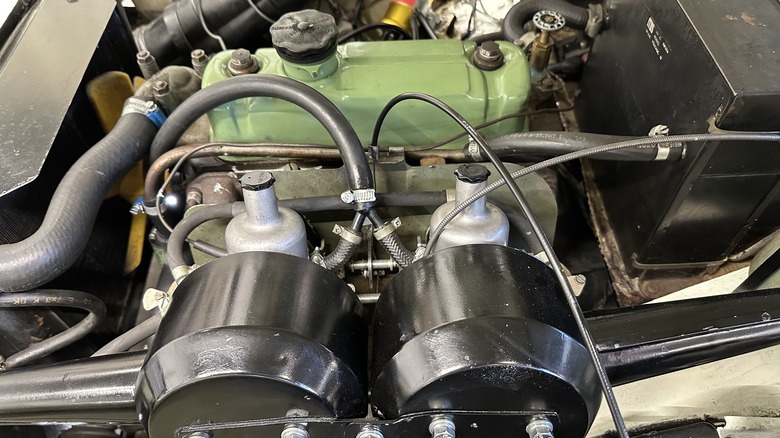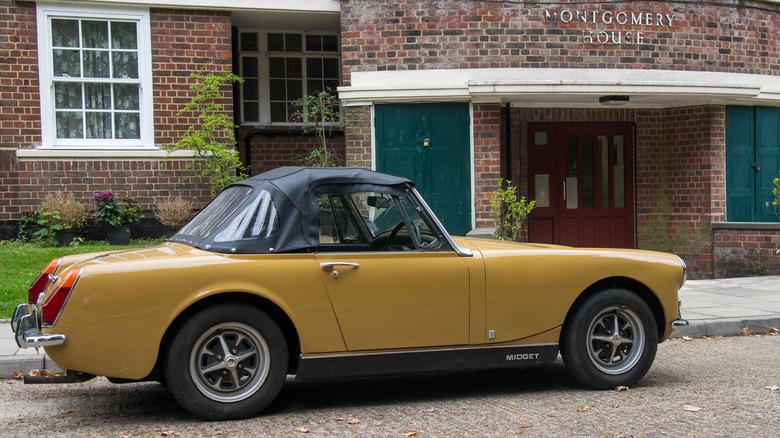Everything MG Fans Should Know About The 1275CC Engine
The MG 1275cc engine was an October 1966 redesign of the 803cc Austin A-Series engine that was originally developed for the 1952 Austin A30. There were many versions of this overhead valve engine with different displacements that powered various MG models, starting in 1961. The 1961 MG Midget had a 948cc version of the engine, which was raised to 1098cc for 1962. In 1966, the MG Midget Mk3 received the newly developed 1275cc version of the A-Series engine. The Midget would use the 1275cc engine through 1974.
Compared to the previous 1098cc engine, the new 1275cc version had many improvements. The block was strengthened, and the timing chain was two rows wide instead of one. The flywheel was held on with six bolts instead of four. A damper that also functioned as a fan belt pulley minimized vibration from the much larger pistons in the 1275cc MG engine.
The new engine's bore was enlarged from 64.5mm to 70.5mm, while its stroke was reduced from 84mm to 81mm. The shorter stroke allowed for a higher rev limit — the 1275cc engine's power was rated at 65hp at 6300 RPM, with a torque rating of 65 lb-ft at 3400 RPM.
More details about the MG 1275cc engine
There are some important details to know about the care and maintenance of the MG 1275cc engine. The engine's firing order is 1,3,4,2, with the #1 cylinder located at the front of the engine. If you are considering the purchase of an MG Midget Mk3 with the 1275cc engine, here are a few tips: Cylinder compression readings should be somewhere in the 130psi to 160psi range, with not more than a 10psi difference between the highest and lowest-reading cylinders. When you need to adjust the two SU carburetors, the air intakes should first be balanced, followed by adjusting the mixture on each carburetor. This may take a series of adjustments to get right. The correct idle speed is 1,000 RPM.
It is also important to note that if the MG 1275cc engine has been sitting for a long time since it was last started, the engine cylinders should be pre-lubed and the engine turned by hand to distribute the oil before starting it. This should eliminate any damage caused by a lack of lubrication during startup.
[Image by Testdriver1925 via Wikimedia Commons | Cropped and scaled | CC-BY-SA 4.0]
The 1275cc engine served MG well
The MG 1275cc engine was also used in the performance versions of the original Mini Cooper that were very successful in competition in their day. This was a solid engine that had significant development potential, which could be exploited by MG Midget owners looking for some extra performance.
The performance of a stock 1966 to 1974 MG Midget with the 1275cc engine was underwhelming by today's standards, but with the top down, the wind in your hair, and the low seating position, it probably felt like much more. The Midget could do 0 to 60 mph in 14.6 seconds, with a quarter-mile time of 19.1 seconds. Its top speed was 95 mph.
Today, the MG Midget with the 1275cc engine is a basic, no-frills British sports car with a totally analog character that's loads of fun to drive. There are no computers to worry about, but the points, plugs, and carburetors will likely need attention at regular intervals. Current auction prices on these classic vehicles can run anywhere from $6,800 to $15,500, depending on condition.


